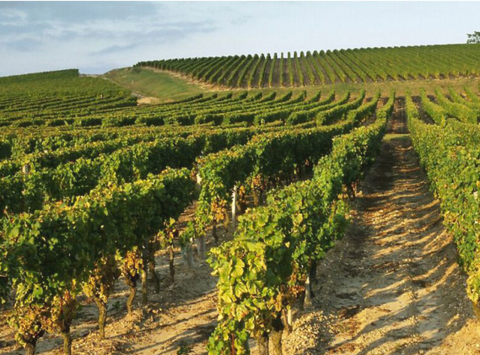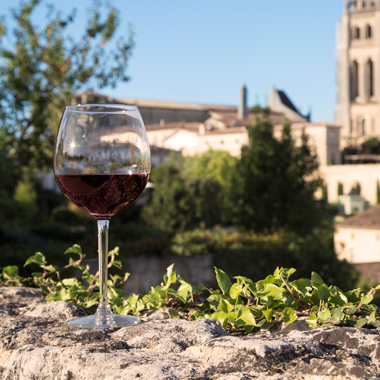John Brunton’s Bordeaux new generation wine trail, part 2
While many winemaking families of the prestigious châteaux of Bordeaux can claim a history stretching back centuries, travelling around today, wine lovers are increasingly likely to come upon one of the new generation of vignerons who have chosen to start a new adventure in the vineyards of Bordeaux. Sometimes this is the latest in the family line who after trying an alternative career cannot resist the allure of their vineyard home, others who convert midlife, abandon successful jobs and open a new page as a debutant winemaker, full of enthusiasm. And an influential proportion are women, eager to make their mark on the Bordeaux wine scene.
These are contemporary vignerons, without all the weight of history and tradition, who are embracing new ideas when making and then marketing their wines, ready to produce wines that are not just organic but biodynamic or zero sulphite, who look beyond the classic cellar of oak barrels and stainless steel vats, to innovative new vinification and ageing methods using terracotta or ceramic amphorae, even returning to retro cement cisterns but no longer coated with epoxy. The results mean there is a new generation of wines to discover, and here are ten of these top new winemakers to track down.
Château Doisy Daëne
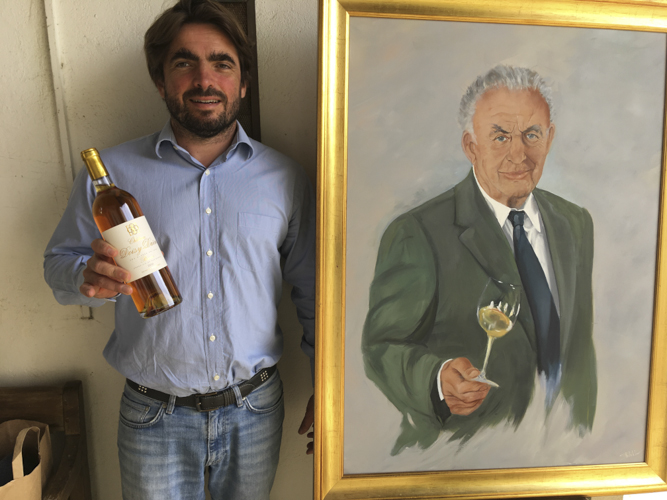
An imposing portrait of the late winemaker, Pierre Dubourdieu, swirling a glass of white wine, dominates the entrance to the cellar of this historic château, overseen today by his grandson Jean-Jacques. The Dubourdieus have been vignerons in the Barsac, Sauternes and Graves since 1774, and Jean-Jacques, stands out from many of his contemporaries, accompanied by a certain weight of expectation. He recalls that, ‘my childhood playground was hanging around my father in the cellar, where we made my first cuvée at the age 12. That is probably why I never studied oenology and chose marketing instead, learning how to sell other people’s wines. But now I am more attached to our family roots than ever before, and selling a bottle of our wine is telling our family story, not some fashionable modern trend. Because being part of the so-called New Generation is also building on the traditions of the 6 generations before you, while the soil, the terroir, is forever, and the vine you plant will grow for at least 50-60 years.’
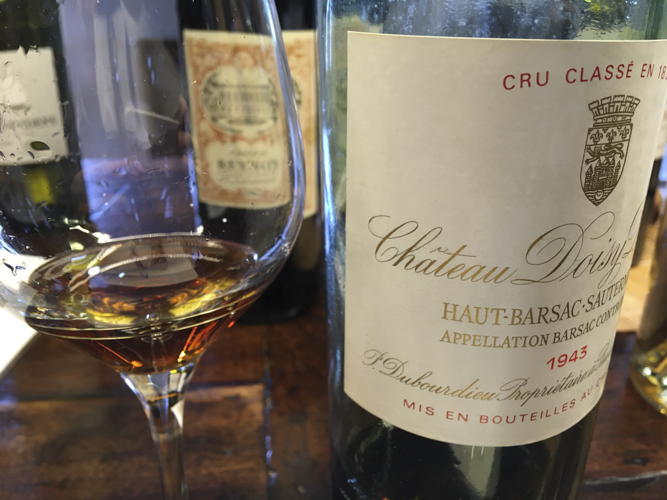
Carefully pouring a luscious glass of the Château’s 1943 vintage, he declares that, ‘a great Barsac is made to be drunk a century later, and that can never happen with a modern ‘sans sulfites’ wine.’ Apart from running the family’s six châteaux, Jean-Jacques enjoys the role of joint President of the Sauternes Syndicat Viticole, and is proud of the region’s pioneering initiatives for wine tourism. ‘Attracting winelovers here is the future, as they will become your loyal customers. We are planning to build a B&B guesthouse, and I always advise visitors to take one of our electric bikes to Le Ciron, where the mist rises up where two rivers meet, helping form the unique botrytis, the Noble Rot that is the secret of Sauternes.’
Château Teynac
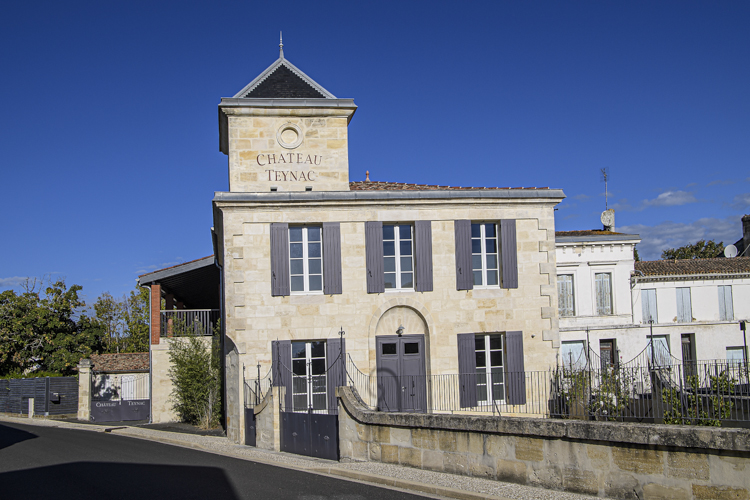
Standing in the impressive ageing room of Château Teynac’s spotless cellar, delicately siphoning off a pipette from the barrel, Eléonore Pairault proudly tastes the 2020 Saint-Julien vintage, brimming with fruit and potential. She is also full of the news that her family’s wine has just been selected to join the exclusive cellar of Président Macron’s Elysée palace. Yet a couple of years ago, Eléonore was pursuing a very different career path in the aeronautical industry before deciding to pursue the life of a Bordeaux vigneronne by returning home to her parents’ winery. She still follows her initial passion though, working with the blossoming new industry of using drones as an innovative aide for vineyard cultivation.
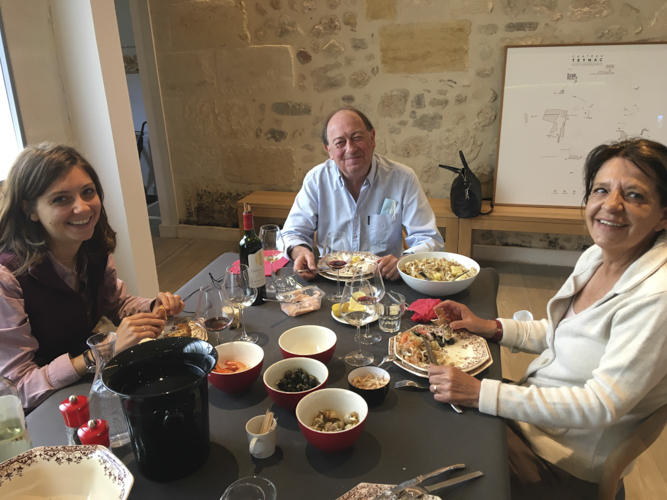
This is by no means a typical Medoc estate, as Eleanore’s parents, Fabienne and Philippe, also abandoned a Parisian lifestyle and high-profile jobs back in 1990 to embark on a wine adventure, purchasing Teynac and Chateau Corconnac, then the neighbouring Château Les Ormes, to create a formidable domaine that stretches over 20 hectares of vines, producing 100,000 bottles a year. The family have succeeded by following a very clear, distinctive philosophy. After choosing a consultant oenologue, all their efforts these last 30 years have been concentrated, firstly on the vineyard, to ensure high-quality grapes, creating a modern cellar, and then renovating the buildings and tasting room of the elegant Château Teynac, perfectly located in the middle of the prestigious winemakers village of Saint-Julien-Beychevelle. While global sales of their wines have been always entrusted to a small group of négociants, the situation for the future is taking a new direction, as Eléonore, is concentrating on increasing social media and website presence, alongside optimising the château’s wine tourism potential, declaring that ‘we have always been a discrete domaine, and now is the time to a higher awareness.’
Château Le Clos du Notaire
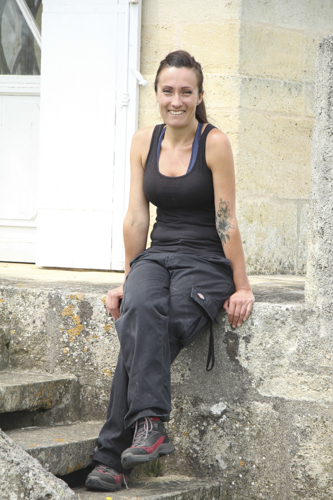
Amélie Osmond and Victor Mischler are proof that you do not need to wait till the approach of middle age to change your life. They have transformed this historic château into a modern winery and tourism destination since buying the property in 2015. Holding court in their modern tasting room, Amélie recounts how, ‘‘at 28 I had already worked for 10 years in the stressful world of interior design, while Victor began his carpentry apprenticeship just 14 years old. We both wanted to work for ourselves, Victor preferably outdoors, so perfect for looking after the vineyard, while I was interested in learning about winemaking in the cellar and the marketing of our wines. So we enrolled at Bordeaux to study oenology and agronomy, then fell in love with the still undiscovered Côtes-de-Bourg. Not just the vineyards and wines, but the long, fascinating history of Bourg’s commercial port on the Dordogne river. And this Château seduced us immediately with its fabulous location overlooking the river. There was terrific potential for wine tourism, so we converted old outhouses into two family gîtes and built a pool overlooking the vines.’
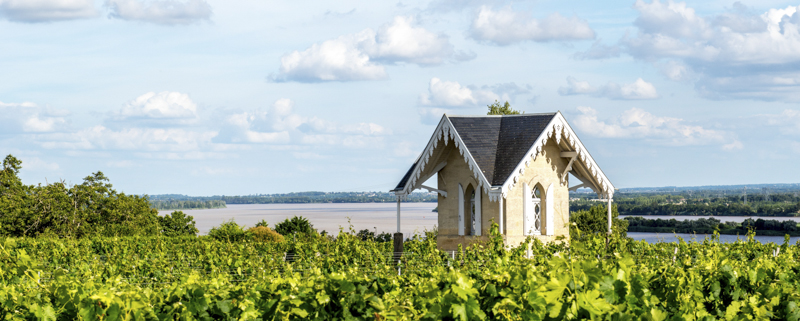
Le Clos du Notaire certainly has a quirky history, built 200 years ago on the site of a 14th-century abbey, purchased by a local solicitor in the early 1800’s, hence the name, The Lawyer’s Vineyard. For Amélie, it was immediately obvious to launch a premium cuvée, La Cravate, marketed almost exclusively to lawyers, and then to break into the wine bar market, came the offbeat Borderline range, with easy-drinking single grape varieties and a sans sulfites cuvée aged in amphorae. ‘And I always make it clear that I don’t make zero sulphite wines to jump on a fashionable bandwagon but because I saw what a difference it makes to the intensity of colour, fruitiness and aromas.’
Château Castagnac
The farmhouse and cellar of Château Castagnac is dominated by a cluster of towering outdoor stainless steel wine vats that were installed by Bernard Couderc in the 1990’s when he sold most of his wine direct to merchants in Bordeaux.
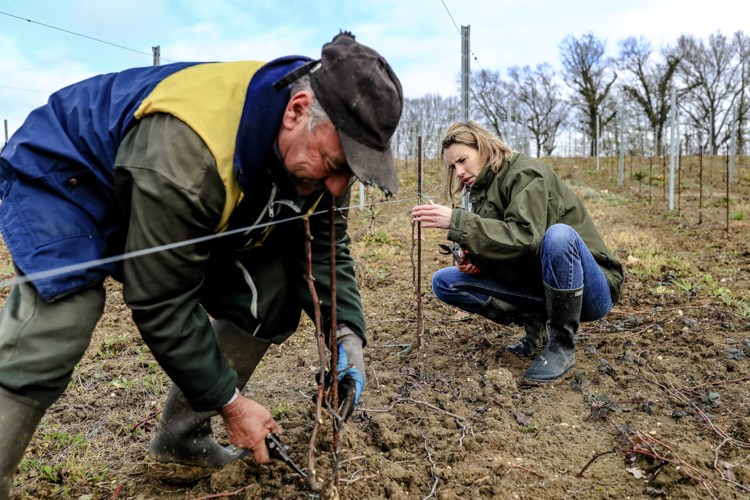
Today it is his dynamic daughter Lydia, the fifth generation, who is giving a completely new image to an estate that was founded back in 1865. This working mother, whose high-spirited children, Margot and Raphaël, are always running around the cellar, has a plan to build a new, modern cellar, bringing all the vats inside, and intends to sell the majority of her wine directly rather than through merchants. She admits that, ‘I left a high-powered career in the energy business to come home 5 years ago, with no diplomas in oenology. But I am working with an innovative young cellar master, and direct sales have already increased from 10% to 50%. Our vineyards cover the Fronsac appellation, Bordeaux and Bordeaux Supérieur, and I have initiated a lot of changes! Most importantly is a move from 2019 towards zero sulphites.
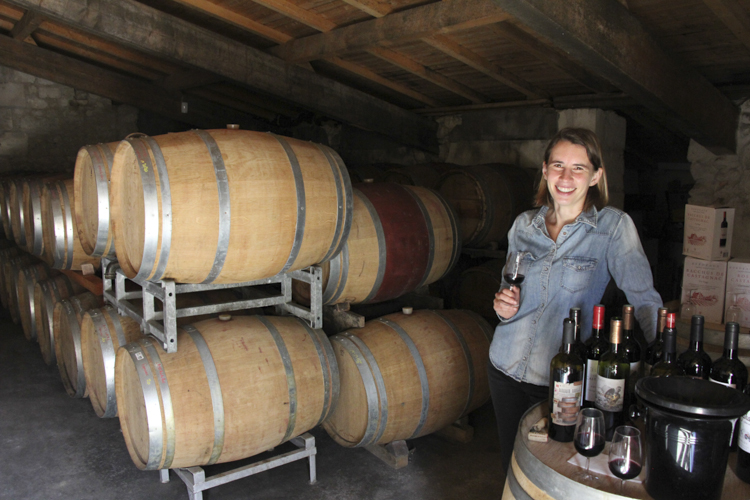
We now have a series of very successful wines that have no added sulphites; drinkable, fruity, with distinctive, modern labels inspired by comic strips. We have even tried ageing a zero sulphite in oak barrels, Barrique Rebelle, no easy task but producing a wonderfully intense, deeply coloured cuvée. And rather than continuing with classic Bordeaux blends, these new wines are all single grape.’ Looking at her little daughter, proudly holding a bottle, Lydia says with a smile that, ‘my Papa never put any pressure on me to take over the domaine, and I will never seek to influence Margot and Raphaël, even if you can see that Margot’s bottle already has her name on the label.’
Château Thieuley
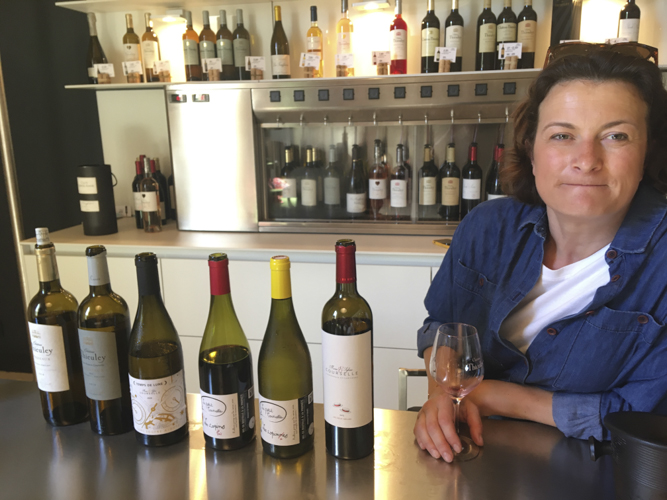
Francis Courselle was well-known for establishing one of the most influential châteaux in the Entre-deux-Mers appellation, but he probably had little idea of the impact his two daughters, Marie and Sylvie, would make when they took over the reins of the property. Both sisters studied oenology and agronomy, though today, Sylvie concentrates more on the commercial side while Marie oversees the winemaking. Marie recounts that, ‘we had always known from young that we would take over our father’s winery – maybe even before he knew it. Although we both went our separate ways after our diplomas, travelling and making wine in California, Australia, Spain, Italy, Languedoc and Burgundy, it was always our plan to come back to Château Thieuley. When I first arrived here I was passionate about wine. Today I am passionate about the grape, as a healthy grape is what makes a great wine.’
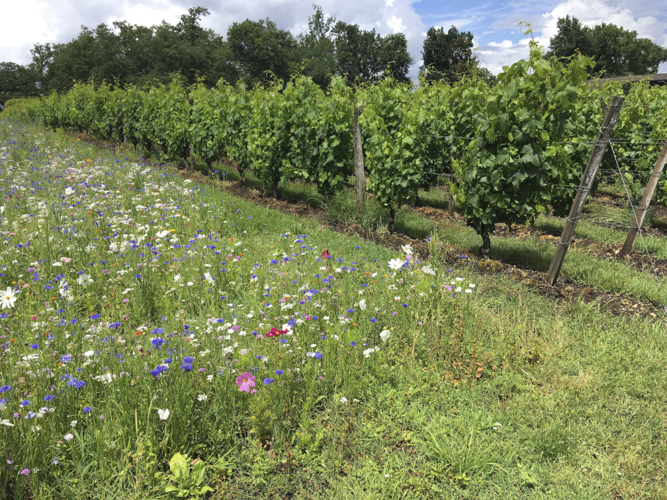
Though not officially organic or biodynamic, their vineyards are bordered by prairies of multi-coloured wildflowers, while olive groves, truffle oaks, fig-trees, shelters for insects and bees, increase biodiversity. The Courselle family has always been avant-gardiste, and Marie is defiant that, ‘there may have been a decline in the demand for Bordeaux white wines – the glass of ‘un petit blanc’ replaced by first Pastis, today the dreaded Spritz – but we have never ceded to the temptation to plant more red, keeping our 76 hectare estate firmly 50/50 red and white, and our Entre-deux-Mers are always made to age at least 2-3 years.’ What they have done though is to adapt to the market demands for innovation by launching an easy-drinking bistrot wine, Le Petit Courselle, and the funky Temps de Lune, where everything from harvest to bottling follows the lunar calendar.
By John Brunton
Read Part 1 here
